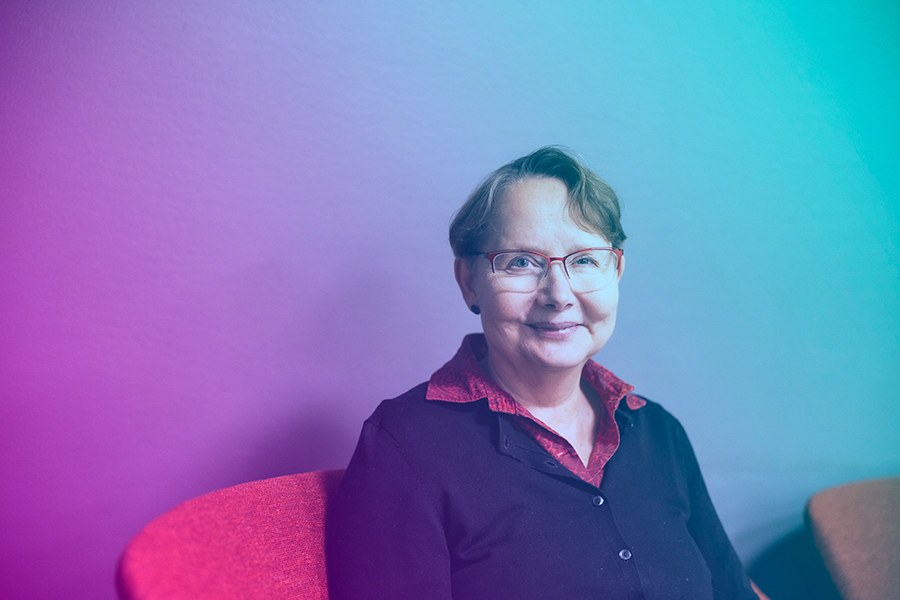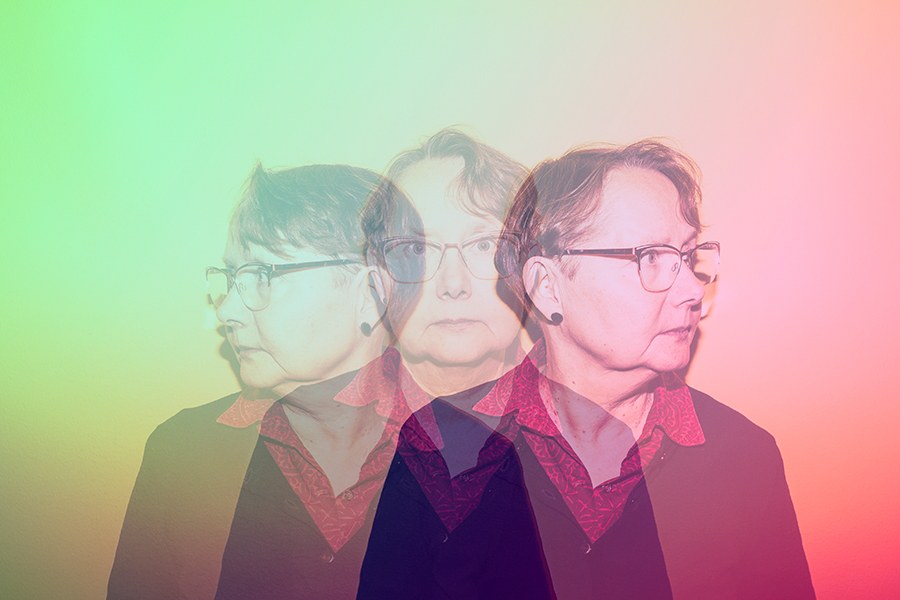"We have existed before" – Rainbow highlights the diversity of gender and sexuality

Am I the first lesbian in Finnish history to live with a woman?
This was the question pondered by Tuula Juvonen, then a social policy student and now a university lecturer and adjunct professor in gender studies at Tampere University, in the late 1980s. Homosexuality, especially lesbianism, were topics that were hardly discussed at the time. Even historical figures were portrayed as heterosexual in public discourse and historiography – or it was said that they “had chosen to remain unmarried”.
"I thought that this cannot be possible; there must have been others before us,” Juvonen says.
She became interested in the topic and wrote her master’s thesis on the correspondence and diaries of Hilda Käkikoski. Käkikoski was a teacher and author who was elected to the Finnish Parliament among the first female MPs in 1907. From her literary estate, Juvonen found strong indications that Käkikoski was attracted to women.
Later, for her doctoral research, Juvonen interviewed gay men and lesbians who had lived in Tampere in the 1950s and 1960s. At that time, homosexuality was still a crime, and relationships with same-sex partners had to be kept strictly confidential.
Juvonen believes it is important to bring out the colours of the rainbow in historiography.
“For example, many notable Finns had a same-sex partner even though it was claimed that they had lived their lives alone. Naturally, it has been difficult to talk about these things because homosexual acts were a crime until 1971,” Juvonen reflects.
An association brings together researchers, archives and museums
Tuula Juvonen is a founding member of the Friends of Queer History association established in 2020. The association aims to raise awareness on the history of gender and sexual diversity and to advance the research, collection and presentation of queer history.
In June, the association received the State Award for Public Information from the Ministry of Education and Culture. The award givers especially praised the association’s clear and informative website, which compiles information on Finland’s LGBTQTI history and presents the culture and research in the field.
The website, Sateenkaarihistoria.fi, includes a rainbow history glossary, for which students have compiled vocabulary from old newspapers.
“In the past, people did not talk about homosexuals but used expressions like ‘light on his loafers' or ‘a nervous wreck’. These keywords are not the first to come to mind when you are searching for information on this topic,” Juvonen points out.
The roots of the Friends of Queer History association trace back to 2017 when Finland celebrated its centenary. The Culture for All service and Seta – LGBTIQ Rights in Finland organised a series of events under the “Finland 100 - In Rainbow Colours” umbrella, celebrating the lives of rainbow people as part of the history of independent Finland. This sparked the need to continue the activities, first as Rainbow History Month, and then as an association.
Rainbow History Month is always celebrated in November. During this month various events are organised, such as theatre performances, exhibitions, museum tours, and discussion events.
“It is great how the activities bring together different actors, such as representatives of archives, museums, and libraries, academics, and artists. Us researchers can help museums, for example, to highlight rainbow history using their own collections,” Juvonen says.
The association also collaborates with Nordic rainbow archives and is part of an international network that includes organisers of Rainbow History Month from Europe to the United States, Indonesia, and Cuba.

Harsh political debate is worrying
Compared to previous decades, the position of sexual and gender minorities in Finland has improved significantly.
No one is sent to prison for having a same-sex partner anymore. Equal marriage is finally possible, and LGBTQI families are beginning to be perceived as part of normal everyday life and society.
However, Juvonen says that problems remain; for example, not all partnership parents have parental rights to their children, and transgender youth still do not have the right to self-determine their own gender. Non-binary youth also encounter much curiosity and discrimination.
Juvonen is also concerned about political debates that suggest gender and sexual diversity does not exist – or should not exist. “We have gotten rid of the Criminal Code, but overall attitudes are still quite harsh and judgemental,” Juvonen says.
Particularly worrying news comes from the United States, where in some states, schools are no longer allowed to teach children about rainbow history. In some states, transgender people are even banned from using public toilets.
“That practically means house arrest. They want to keep those people out of sight,” Juvonen says.
Diversity does not threaten anyone
In the current political climate, Juvonen believes it is more important than ever to highlight that rainbow minorities have always existed.
“Because we have existed before, these are not just fashionable trends. Bans and legislation cannot eradicate this issue; they only devastate people’s lives,” Juvonen says.
According to her, highlighting rainbow history can reduce prejudices and moral panic related to the topic. The fact that people experience their gender or sexuality differently is not a threat to anyone.
“If we can show that there has been diversity in history as well, it might help people approach these issues a bit more calmly. The world did not end then, so maybe it will not end now,” Juvonen concludes.
Explore the Friends of Queer History association website

Highlights from Finland’s queer history
1971: The Criminal Code is amended to repeal the ban on homosexual acts. At the same time, the public promotion of same-sex fornication becomes punishable.
1981: The National Board of Health deletes homosexuality from the classification of diseases.
1999: The ban on public promotion of same-sex relations is repealed after 28 years.
2002: Act on registered partnerships enters into force.
2009: Internal adoption within the family becomes possible for registered partners.
2011: The National Institute for Health and Welfare removes transvestism and fetishism from the classification of diseases.
2017: An equal Marriage Act enters into force. The requirement for forced divorce is repealed from the Trans Act.
2023: Parliament approves amendments to the Trans Act. The reform allows the legal recognition of gender without sterilisation or a psychiatric diagnosis. Source: Finland’s Queer History Timeline - Sateenkaarihistorian ystävät
Source: Finland’s Queer History Timeline - Sateenkaarihistorian ystävät
Author: Virpi Ekholm





